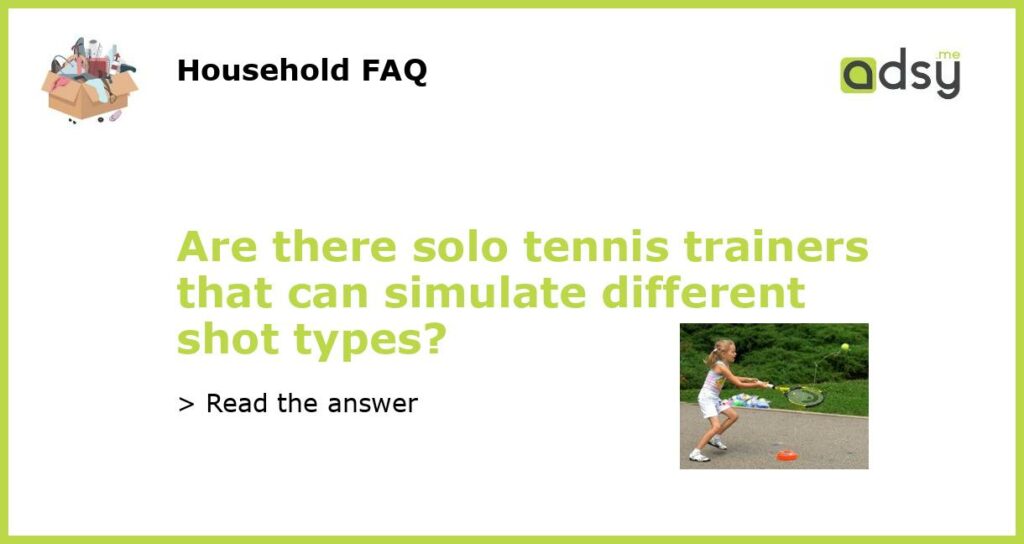Playing tennis requires a combination of skill, technique, and strategy. One of the best ways to improve your game is by practicing different shot types. While practicing with a partner is ideal, it is not always possible. That is why many tennis players turn to solo tennis trainers that can simulate different shot types. In this article, we will explore the options available for solo tennis trainers and their ability to simulate various shot types.
Tennis Ball Machines
Tennis ball machines are one of the most popular choices for solo tennis trainers. These machines are designed to shoot balls at different speeds, angles, and heights, allowing players to practice a wide range of shots. Some advanced models even have pre-programmed settings for specific shot types such as topspin, slice, and lobs. They can also be adjusted to simulate the speed and style of a particular opponent’s shots.
Tennis Rebounders
Tennis rebounders are another option for solo tennis training. These devices consist of a net stretched across a frame, which allows the ball to rebound back to the player after being hit against the net. By adjusting the angle and tension of the net, players can control the trajectory and speed of the rebounding ball. This allows for practice with different shot types, including volleys, groundstrokes, and even serves.
Virtual Reality Tennis
Advancements in virtual reality (VR) technology have also made it possible to simulate different shot types in tennis. Companies like VR Motion Corp have developed VR systems that allow players to practice their swings and footwork in a virtual tennis court. These systems use motion sensors to track the player’s movements and provide real-time feedback on technique and shot selection. While not as physical as training with a ball machine or rebounder, VR tennis can help players develop their skills and decision-making abilities.
Smart Tennis Training Aids
In recent years, smart training aids have become increasingly popular among tennis players. These devices use advanced sensors and technology to track and analyze a player’s shots, providing feedback and suggestions for improvement. Some smart training aids, such as the Zepp Tennis Sensor, can be attached to a racket and provide data on shot speed, spin, and impact location. This information can help players understand the mechanics of different shot types and make adjustments to their technique.
Whether you prefer traditional tennis ball machines, rebounders, virtual reality systems, or smart training aids, there are plenty of options available for solo tennis training that can simulate different shot types. These tools can help players improve their skills, develop their technique, and enhance their decision-making abilities on the court. While nothing can replace the experience of playing against a real opponent, solo tennis trainers offer a convenient and effective way to practice and refine your shots.






